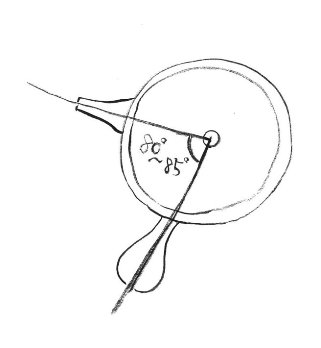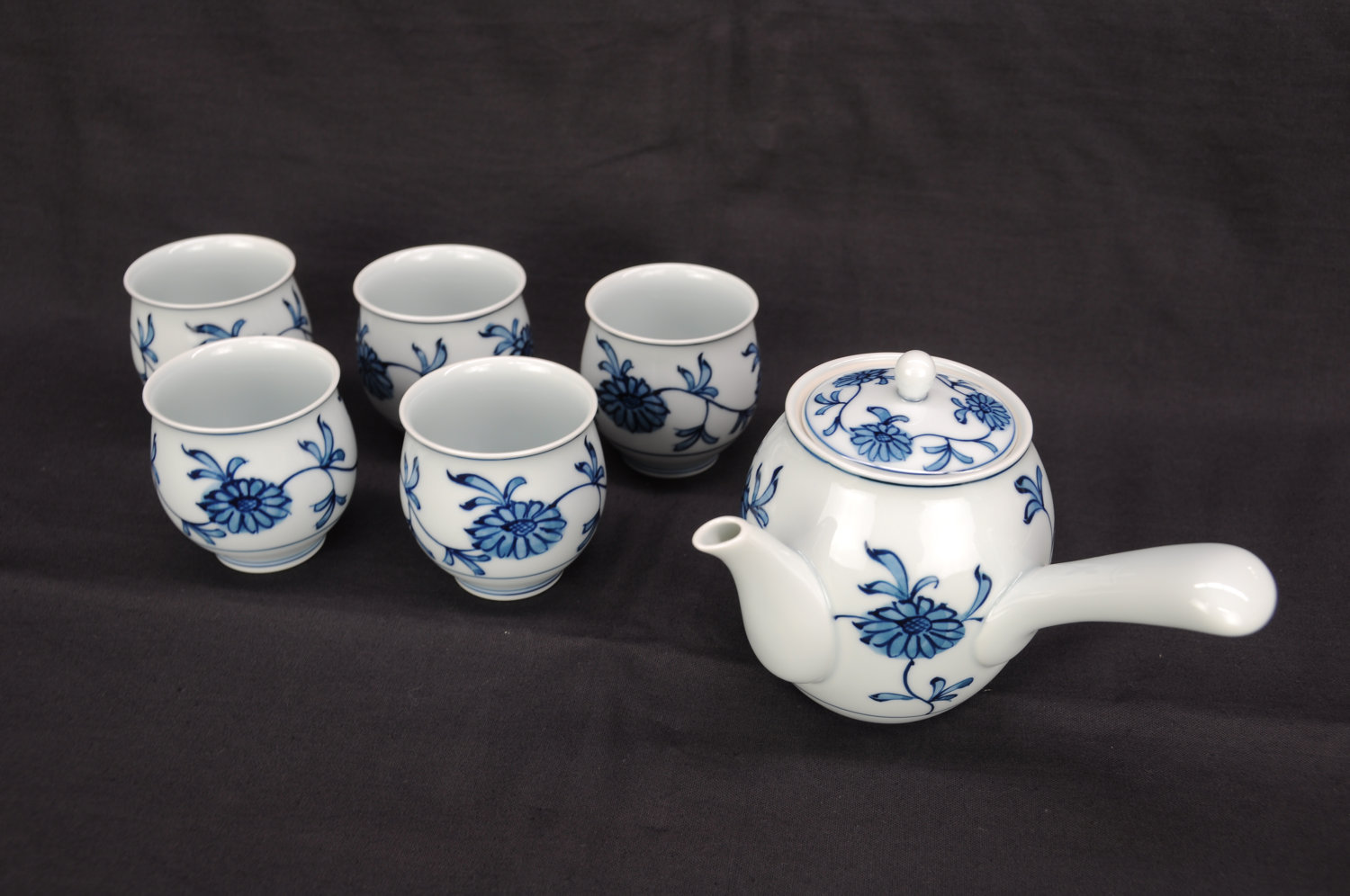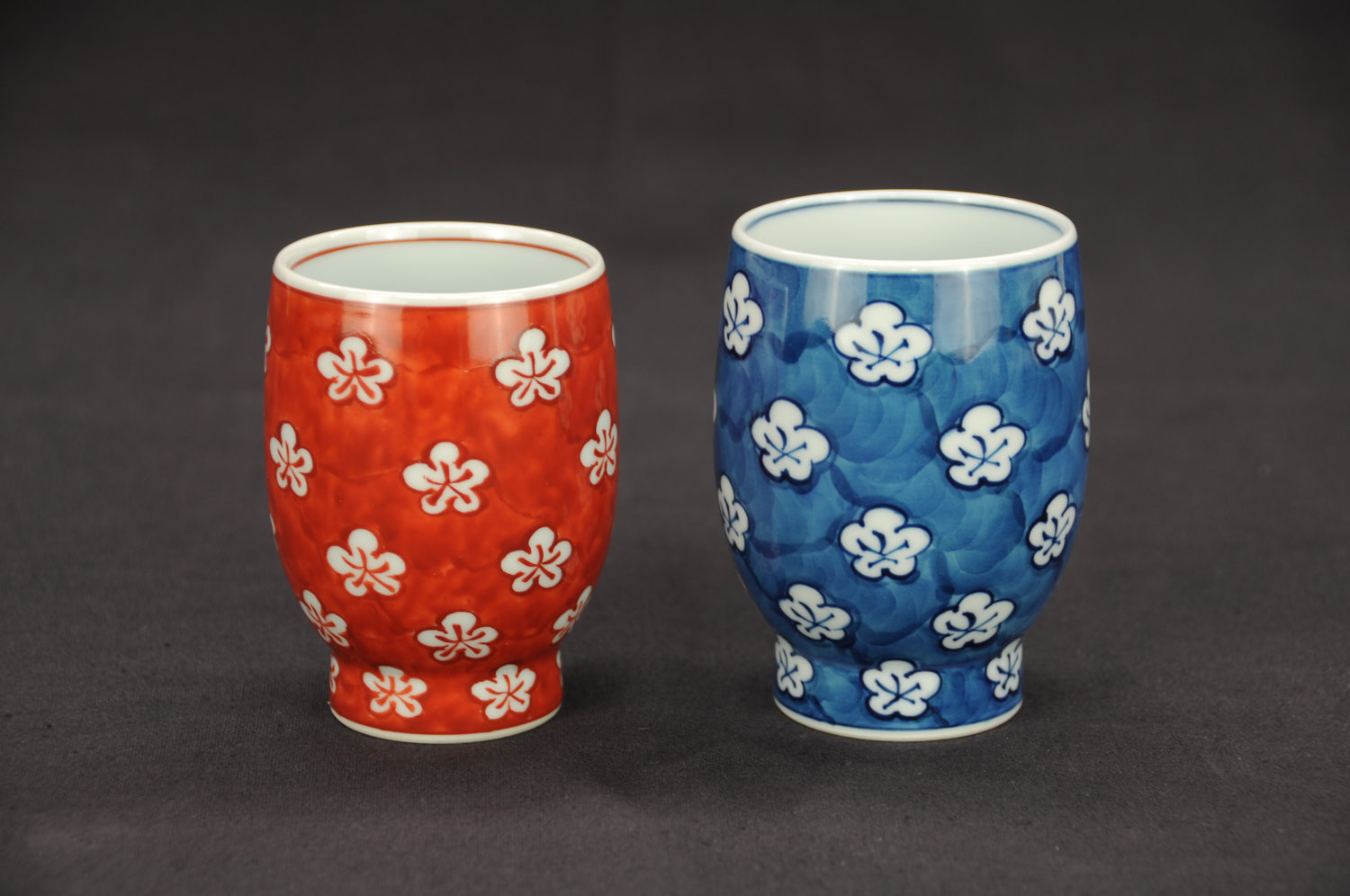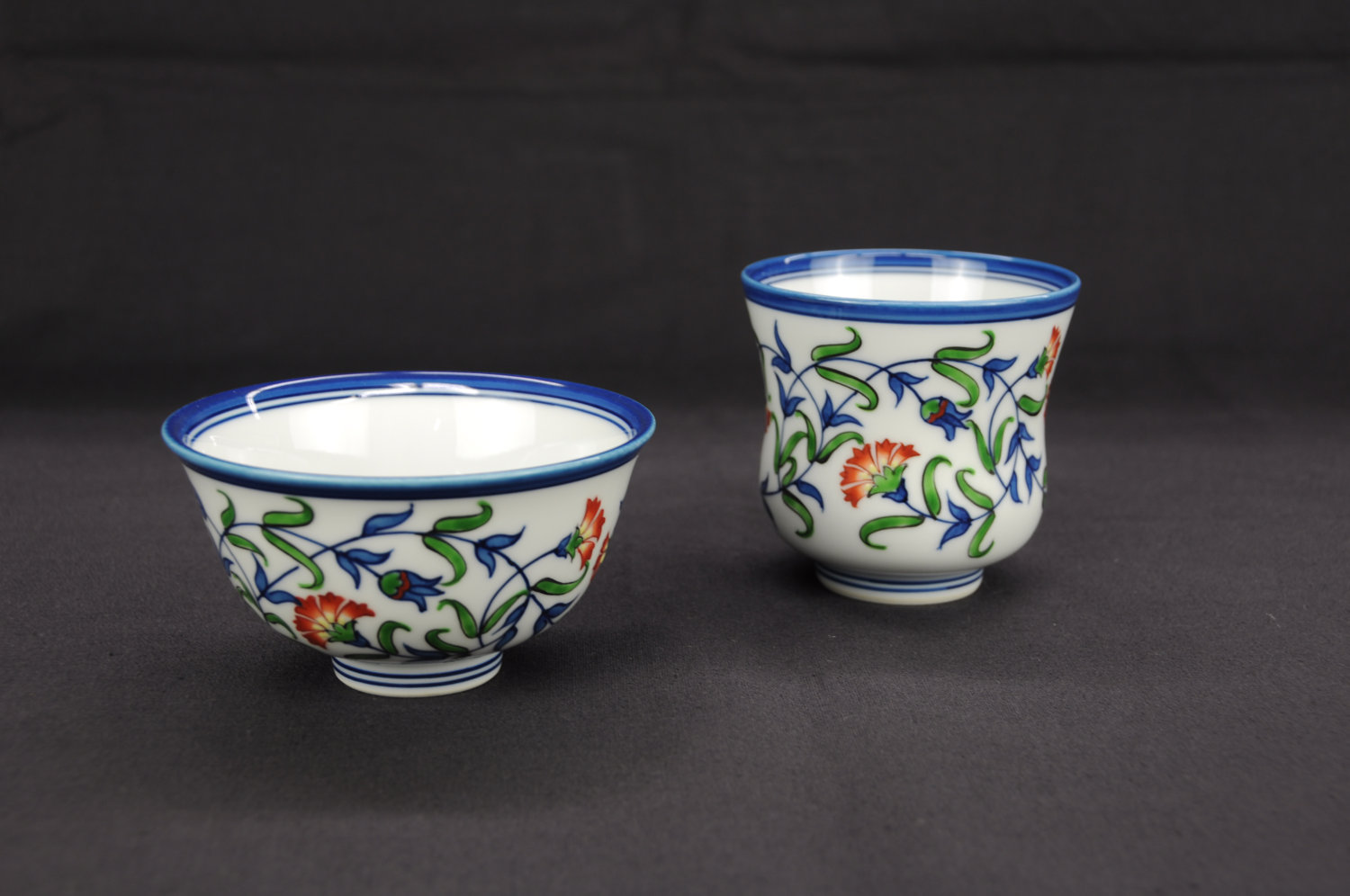Japanese Potteries(Explanations to the technical terms of ceramics No.5)
There are various technical words on potteries. Here are some of those, for which I’d like to give you some remarks.
Drinking (Tea)
The typical vessel to use when drinking tea is a tea cup. You may warm up your body and finger with hot hojicha (roasted green tea) in the cold season, and swallow a cup of cold mugicha (barley tea) in summer. The material or shape of cups varies on whether it’s hot or cold.There’s nothing like a little thick ceramic cup to pour hot tea. It’s faintly warm in hands and you may feel relieved by the warmth of the cup you just hold.
The heat conduction of ceramics is so slow and it’s hard to get hot immediately upon something hot is poured. Exceptionally, fine-grained clay used for something like Bizen or Tokoname ware gets very tight when baked and conducts heat faster, so you’d better choose thicker one in this case.
About a shape, one not having a wide opening is recommendable to prevent from heat escaping from the large opening and that your tea gets colder soon. What is ideal is one in a round shape or with a straight vertical line having a narrow opening. Just bringing the cup closer to your mouth may make you relax with the aroma of hot tea. By the way, choosing a cup which inside is white is good for enjoying the color of tea as well, isn’t it?
The next is about cups for cold tea. It should be thin porcelains. White or celadon porcelains look refreshing and the thinness of the rim holds an airy mood. As you may drink much in the hot season, it is good that the thickness of cups is not that you find it heavy with one hand even if it’s filled with tea. One with a wide opening is better for putting some ice in. With a thinly shaped rim, tea comes into mouth smoothly and you finish it up in a second, don’t you?
For pouring tea, we usually use a small teapot, which is especially good for hot tea to be prepared as much as it doesn’t get cold. Teapots are products in which the workmanship can be seen, because 5 different parts of which, pot body, lid, handle, spout and strainer, have to be made separately and combined. It’s actually difficult to make it to be well-balanced, user-friendly, and good to pour without spills. Most of teapots are for the right-handed. When holding it with your right hand, the spout faces to the left. The angle of the handle and the spout looks like 90 degrees but in fact it is made to be a little narrower. This is for holding the pot closer to your body to pour tea easier. It’s a little ingenuity in considering not to have something hot spill out.

By the way, when you wash a teapot, take the lid off and throw the tea leaves away, and then bring the lip of spout closer to a faucet and flush out tea leaves around the strainer. After that, get some water inside, put the lid back on, shake it lightly, and throw water away from the top opening. By doing so, tea leaves will be removed well. For drying it, take the lid off and turn it over upside down. You should handle it carefully not to damage the edges of spout and handle.
You can purchase the products. Click an item to view its detail at Marketplace.




